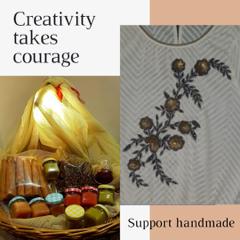
The late 1700s sparked an industrial revolution as paradigm of socio economic development. Thus began the battle between man and machine also impacting art and culture. A glance at the past events makes us understand that even if society benefits from evolution there will still be winners and losers from revolutionising technology. Resulting in usually lost generations who not only lack the skills, education, knowledge or willingness and adaptability to accept and practice the change. It is a complex paradox situation where it is difficult to convert a skilled craftsman or a labour to operate machinery or find a fresh batch of people and train them instead. Either ways there is a winner and a looser unable to bridge the distance of one loosing skill based employment and the other gaining a skill and employment both. We are left to ponder that although the industrial revolution and modern machineries have helped raising employment and fast track mass production reducing human labour and enabling a rising economy, the jolting question remains. Is every skill, art, craft and traditional forms replaceable?
How human mentality and psychology led to this development of human evolution and the practice of living in a group with mutual understanding and codependency. Large communities were gradually formed from isolated groups giving birth to remarkable civilizations. Let’s discuss some of the oldest civilisations and how they have affected us in more then one way.
The Indus Valley Civilization the second oldest civilisation in the world, existed during the period 3300BC-1900BC located around the Indus basin. It is the modern day Northern Afghanistan, Pakistan and North west India. It was the most wide spread civilisation covering 1.25 million Kms. Also known as the Harappan civilization and the Mohenjo-Daro civilization, named after the excavation sites where the remains of the civilization were found, the peak phase of this civilization is said to have lasted from 2600 BC to around 1900 BC. The people of the Indus River Valley Civilization achieved many notable advances in technology, including great accuracy in their systems and tools for measuring length and mass. Fire-baked bricks—which were uniform in size and moisture-resistant—were important in building baths and sewage structures and are evidence that Harappans were among the first to develop a system of standardized weights and measures. The consistency of brick size across cities also suggests unity across the various urban areas, which is evidence of a broader civilization. The Indus River Valley Civilization is considered a Bronze Age society; inhabitants of the ancient Indus River Valley developed new techniques in metallurgy—the science of working with copper, bronze, lead, and tin. Trade focused on importing raw materials to be used in Harappan city workshops, including minerals from Iran and Afghanistan, lead and copper from other parts of India, jade from China, and cedar wood floated down rivers from the Himalayas and Kashmir. Other trade goods included terracotta pots, gold, silver, metals, beads, flints for making tools, seashells, pearls, and colored gemstones, such as lapis lazuli and turquoise.
Comparing the impact of older civilisations to the present machine and technology age there is no doubt that the latter has provided growth to many sectors and employment to many. On the other hand lost in the oblivion are the traditional methods of sculpting, dyeing, painting, art, music, hand embroideries, pottery, printing and the list is endless. What is worrisome that many artisans who functioned from an area of passion, tradition and devotion are incapable of being revolutionised as the focus remains on keeping their skill alive. Although many cause driven organisation and government support these masters yet they remain in the shadow of their cheaper machine and digital replicas. Ours is a land of versatile geniuses and a civilisation of myriad art forms. It is important that we keep our heritage alive unlike countries like China who have completely transformed from also being one of the oldest civilisations with an equally rich history and taken to technology in all walks of life. Undoubtedly they have strengthened economically and let us leave it to their choice.
There are ways we can impact on promoting arts and artisans without actually challenging technology and instead using it in favour. If we can buy directly from local vendors and keep our culture alive and support them directly by helping them with their livelihood without compromising with their self respect it is the best option. But what is of utmost importance is our genuine support and not our buying capacity particularly. How can we achieve it is by making East meet West. Lets us use digital media marketing, word of mouth to promote vendors in our area by providing them more visibility and digital presence.
Change is inevitable but so is preserving our culture and heritage because we are the man operating the machines and not the vice versa.
Author : Kanishka Kapoor
Grade 12th
Dewan Public School
(Meerut, U.P.)






